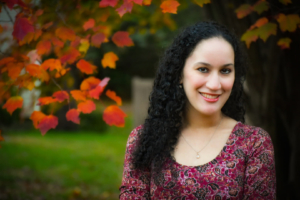Litdish: On the Ways We Access Beauty and Love: An Interview with Jeri Frederickson
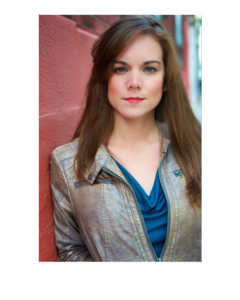
You can find more information on Jeri Frederickson through her work with Awakenings. She has published poems in print or online in Thimble Literary Magazine, Vine Leaves Literary Journal, Thank You for Swallowing, Awakened Voices, and Thought Collection, and has published reviews and interviews on The Poetry Cafe. She is also the proud cat momma of the two monsters, Atlas and Leo, who have inspired @BSHL_furmonsters and the creation of an unproduced web series and comic called Big Strange Haired Lady and the FurMonsters. She has also directed premieres in festivals and full productions in small theaters in Chicago and NYC. She is an ensemble member and previous Associate Artistic Director at Irish Theatre of Chicago. She spent almost ten years as a freelance stage manager at theater companies that focused on musicals, new work, and circus adaptations in such companies as TimeLine Theatre, Lookingglass Theater, Chicago Children’s Theatre, Mercury Theater, Drury Lane, and Piven Theater (Chicago) and Barrington Stage Company (MA). She is a member of Actors’ Equity Union.
Jeri Frederickson may have just completed her MFA at Antioch University, but she’s already busy. As the Creative Director for Awakenings, a nonprofit organization based in Chicago that works with survivors of sexual violence, she curates art exhibits that incorporate movement and vocal performance to create an artistic healing process.
Frederickson has her hands in a little bit of everything. From theater productions to web series, she is a non-stop content creator. Her work has recently been published in Thimble Literary Magazine.
This past July, we shared a lovely virtual chat on a sweltering summer day to discuss her creative process, what inspires her, and, of course, her fur monsters.
1. What is the role of “creative director” like? What do you do?
As the creative director, I find ways to bring together visual artists and literary artists. I find ways to enable artists to pass their stories to each other, to understand that their collective story is bigger. Even though our stories stand apart from each other, even though we use different artistic mediums, we’re still together. We’re still a collective.
One of my favorite things to do is encourage writers to respond to our gallery walls. We have dancers come in and spend hours moving in the space in response to the art. For us, solidarity is important—honoring what has been created by people who’ve come before. Our process often helps to generate new art. It creates the feeling that we are making more space for people. To me, that is the core of community—that feeling that there is space for you and me, and all of us belong here.
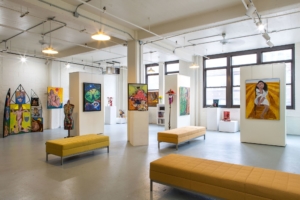
2. Is there a special project you’ve worked on that meant a lot to you?
I really loved working on a magazine issue we did on the topic of erasure. It was the first time I got to create a visual and literary work of art. The responses that came in were so beautiful, moving, and powerful.
And right now, there’s an exhibit we’re doing on legacy.
I looked at Awakenings’ permanent visual art collection and started thinking about what it means to inherit. I came to Awakenings four years ago, so I inherited a legacy. I’ve been part of building onto that legacy, in ways I hope last longer than me. The volunteers, art committees, artists, and survivors of sexual violence are creating a legacy of their own. For themselves, for Awakenings, and hopefully for our community at large. The conversation on what it means to heal from sexual violence is continuous, ongoing.
3. Why are organizations like this important?
People need to be seen and heard. There needs to be space where survivors can decide what healing looks and feels like for them. Awakenings is one of those places. That solidarity component is vital. Even if their experiences look different, we must get to the core of what it means to be human. I want to constantly participate in what it means to be human, continuously evaluate ways in which I can affect change and show up, as an act of healing wounds.
4. How has Awakenings dealt with COVID-19? What was the impact like, and what has the organization done in the meantime?
For us, it’s been about supporting one another. We’ve listened to what our artists are interested in. I’ve been in communication with everyone who submitted work to say, this is what we feel safe and comfortable doing. Please tell us what you feel safe and comfortable doing. The more we communicate, the more connected we feel to our community.
5. As a poet, do you incorporate poetry or its process into your curating?
I think, as a poet, I’ll never separate from seeing the world through that particular lens. It’s helpful to have people who see through a different perspective. Our gallery layout space mimics poetry in the sense that it takes someone through a journey. In that way, I curate art exhibits the way artwork speaks to other artwork. Hopefully, a visitor could come through and experience the tension and release that I think poetry does really well.
As well, my voice tends to add a poetic layer. The writing that we do, as an organization, accompanies the artwork. Some of the workshops we’ve had over the years, I created explicitly with the intention of responding to poetry. The curating doesn’t end with the artwork going on the wall or the magazine issue published. It rolls in shifts and takes off in a way that attempts to be a liaison between an audience member and the artwork. I think that’s what ultimately interests me about poetry—being able to guide participants through the most peaceful and tense parts of themselves.
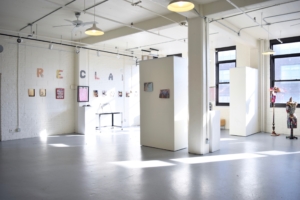
6. What inspires your curation and poetry?
With curating, I am constantly inspired by human resilience and the vastly different ways our world creates art. From household items to animal bones to sculptures that have been molded from cold steel, artists have come in with different materials that demonstrate humanity and resiliency.
As a poet, I think my inspiration comes from many different places. I struggle more to talk about my creative process as it relates to poetry. I think I try to get out of my own way. The best way for me is to be in nature. We are asked as artists to evaluate whatever inspiration comes and be reflective. The more we turn something over and over, it hopefully becomes more polished, and it becomes something that is bigger than ourselves.
In creating my own work, I frequently see something outside myself that ultimately will reveal something about me at my core. For me, there is a release in actually knowing that what I create doesn’t have to last forever. There is a release of pressure in what I am making if I give myself permission to release it back into the world.
7. What is your creative process like?
I like to write with music. I tend to want an environmental noise in the background, sounds of nature. I’ve found I create my most refined writing after I’ve been out in nature.
I also need to make a literal mess of my environment, and at some point in the process, I also need to clean it up. The mess and the chaos don’t stay. But making the mess and reorganizing is really helpful sometimes, especially when I’m stuck revising or working on something that is more narrative. I treat it like a puzzle.
8. You’re also involved in the theater scene. What drew you in and why?
As soon as I entered the world of theater, I felt immersed in a writer’s creation, and I had a group of friends with me because theater includes a live audience. Whether I was in the audience or on stage or backstage, I felt part of a whole community. I feel like my imagination really got to go to new places and enjoy other people’s imagination, while feeling a huge sense of belonging within this community.
9. What productions have you directed?
Most recently, I directed a play called Maker of Worlds. It’s a brand new play, a one-person show with the actor playing six different characters. I have worked with this playwright before, Wendy Schmidt, and I love collaborating with her. This is one of the first times I’ve done a solo show. I love Wendy’s writing and am always interested in her ideas. I was able to say to the producer I wanted to work with her. Deciding who I was going to collaborate with was just a dream. We were able to perform in Chicago and at the Dream Up Festival in New York City.
Most theater artists aren’t working right now, and available theater work looks different. It’s missing the audience that can hear and breathe with you. I really miss that. I am so hopeful for the ways theater and all the arts will continue to ask questions about our broken world, our broken selves, and of the ways we access beauty and love.
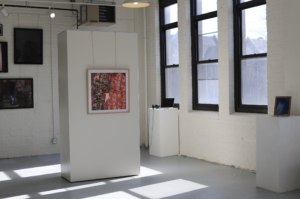
10. Why is this work important to you?
I am forever interested in accessing the best parts of myself. For me, there isn’t a separation between art and the best parts of life. While the mediums may change, while the way people talk about story may change, while we reexamine what community should be and how we participate, I think its core is the same. Regardless of the way art sounds, looks, or feels, there is always a sense of safety, thriving, and wonder. I will always find a way to overcome whatever shyness or brokenness lies within me in order to access that in art.
Loumarie Ivette Rodriguez is a newspaper reporter in Connecticut and earned her MFA from Antioch University Los Angeles. She was the editor-in-chief of the Lunch Ticket literary journal for the Winter/Spring Issue 17 and Summer/Fall Issue 18. She was also the Flash Prose lead editor for the Women’s National Book Association Writing Contest 2020. She is currently working on her novel along with several short stories. In her spare time, she co-hosts a movie review podcast called Worth a Watch with Loumarie and Steve found streaming on Spotify and Apple Podcasts. She can usually be found lurking in coffee shops, traveling, or attempting to read several books at once. You can find her on both Twitter and Instagram at @rloumarie26.

